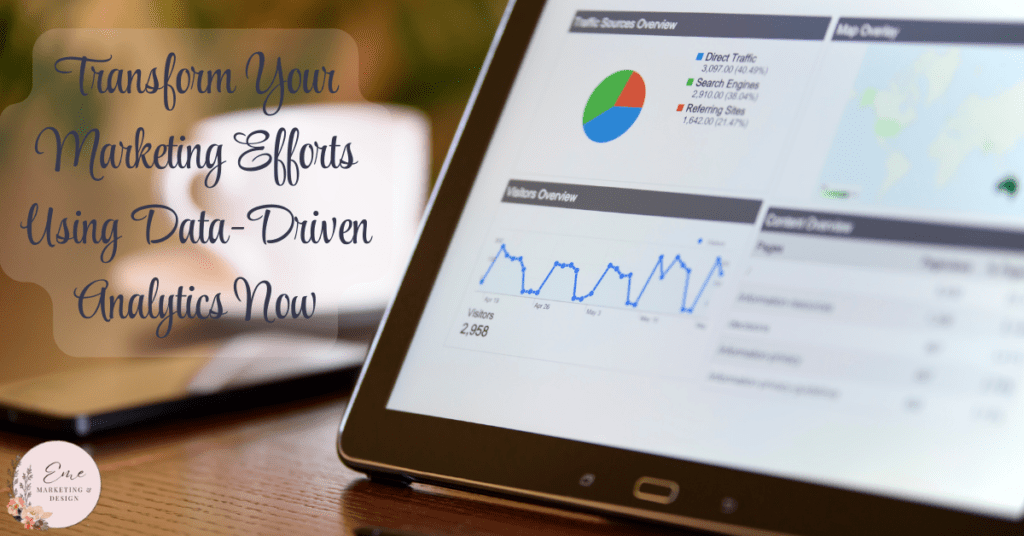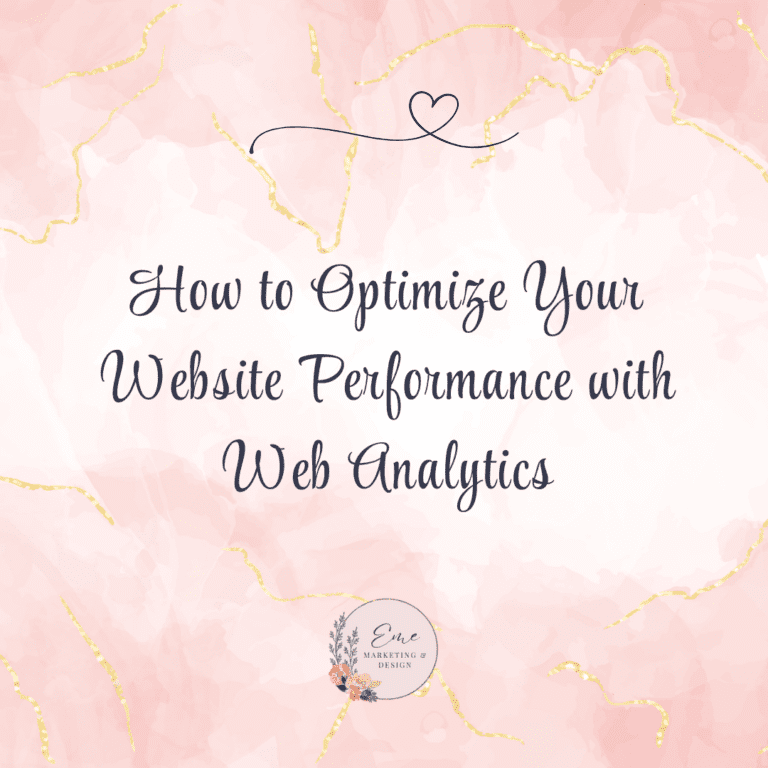
In today’s competitive business landscape, making informed decisions is more critical than ever. The days of relying solely on gut feelings and traditional methods are long gone. Enter the era of data-driven decision-making—a transformative approach that leverages analytics to elevate marketing strategies to unprecedented heights. Let’s explore how analytics can revolutionize your marketing efforts, driving efficiency, effectiveness and measurable success.
The Power of Data in Marketing
Data is often referred to as the new oil, and for good reason. Just as oil fueled the Industrial Revolution, data fuels the Digital Revolution. The vast amount of data generated every second—through social media interactions, website visits, transaction records and more—hold invaluable insights into consumer behavior, preferences and trends. When harnessed correctly, this data can be a game-changer for marketers.
Understanding Customer Behavior
One of the most significant advantages of data-driven marketing is gaining deep insights into customer behavior. By analyzing data from various touchpoints, marketers can understand how customers interact with their brand, what motivates their purchases, and what factors lead to churn. This understanding allows for the creation of highly personalized and targeted marketing campaigns.
For example, e-commerce giants like Amazon use data analytics to recommend products based on past purchases and browsing history. This personalized approach enhances the customer experience and drives higher conversion rates and customer loyalty.
Optimizing Campaign Performance
Data analytics provides real-time feedback on marketing campaigns, allowing marketers to measure performance accurately. By tracking key metrics such as click-through rates, conversion rates and customer acquisition costs, marketers can identify what’s working and what isn’t. This real-time feedback loop enables quick adjustments, ensuring marketing budgets are spent efficiently.
For instance, a company running a pay-per-click (PPC) advertising campaign can use data analytics to monitor which keywords drive the most traffic and conversions. If specific keywords are underperforming, they can be replaced with more effective ones, optimizing the campaign for better results.
Enhancing Customer Segmentation
Effective marketing relies on reaching the right audience with the right message. Data analytics allows for sophisticated customer segmentation, breaking the customer base into distinct groups based on demographics, behavior, preferences and more. This granular segmentation ensures that marketing efforts are tailored to each group’s needs and desires.
Consider a fashion retailer that uses data analytics to segment its customers into trendsetters, bargain hunters and loyal customers. By understanding each segment’s unique characteristics and preferences, the retailer can craft targeted marketing messages that resonate with each group, leading to higher engagement and sales.
Tools and Techniques in Data-Driven Marketing
Leveraging the power of data in marketing requires the right tools and techniques. Here are some of the most effective ones:
Customer Relationship Management (CRM) Systems
CRM systems are essential for managing and analyzing customer interactions and data throughout the customer lifecycle. They provide a centralized repository for customer information, enabling marketers to track interactions, preferences and purchase history. Popular CRM systems like Salesforce and HubSpot offer powerful analytics capabilities, helping marketers make data-driven decisions.
Marketing Automation Platforms
Marketing automation platforms like Marketo, Eloqua, and Mailchimp streamline and automate marketing tasks such as email campaigns, social media posting, and lead nurturing. These platforms often include analytics features that track campaign performance and provide insights into customer behavior, enabling more effective marketing strategies.
Web Analytics Tools
Web analytics tools like Google Analytics and Adobe Analytics provide detailed insights into website traffic, user behavior and conversion rates. These tools help marketers understand how visitors interact with their website, which pages are most popular and where visitors drop off in the conversion funnel. This information is crucial for optimizing website performance and improving the user experience.
Social Media Analytics
Social media platforms offer built-in analytics tools that track engagement metrics such as likes, shares, comments, and follower growth. Tools like Hootsuite and Sprout Social consolidate data from multiple social media channels, providing a comprehensive view of social media performance. By analyzing this data, marketers can identify which types of content resonate most with their audience and adjust their social media strategies accordingly.
Predictive Analytics
Predictive analytics uses historical data, machine learning and statistical algorithms to predict future outcomes. In marketing, predictive analytics can forecast customer behavior, identify potential leads and optimize marketing strategies. For example, a company can use predictive analytics to determine which customers will likely churn and proactively implement retention strategies.
Implementing a Data-Driven Marketing Strategy
Adopting a data-driven marketing strategy involves several key steps:
1. Define Clear Objectives
Start by setting clear, measurable objectives for your marketing efforts. Whether increasing brand awareness, driving website traffic or boosting sales, having well-defined goals will guide your data collection and analysis efforts.
2. Collect Relevant Data
Gather data from various sources, including website analytics, social media, CRM systems and customer surveys. Ensure the data is accurate, up-to-date and relevant to your marketing objectives.
3. Analyze the Data
Use analytics tools to process and analyze the data. Look for patterns, trends and insights that can inform your marketing strategies. For example, if you notice that a particular demographic is highly engaged with your social media content, consider creating targeted campaigns for that group.
4. Develop Data-Driven Campaigns
Based on your analysis, develop marketing campaigns that leverage the insights gained from the data. Personalize your messaging, target specific customer segments and optimize your campaigns for maximum impact.
5. Monitor and Adjust
Continuously monitor the performance of your campaigns using analytics tools. Track key metrics and compare them against your objectives. Be prepared to make adjustments to improve performance and achieve your goals.
Case Studies: Success Stories of Data-Driven Marketing
Case Study 1: Netflix
Netflix is a prime example of a company that uses data-driven marketing to its advantage. By analyzing viewer data, Netflix can recommend personalized content to each user, increasing viewer engagement and retention. The company also uses data to decide which original content to produce, ensuring its investments align with viewer preferences.
Case Study 2: Coca-Cola
Coca-Cola leverages data analytics to optimize its marketing campaigns. By analyzing social media data and customer feedback, Coca-Cola can identify trends and preferences, allowing the company to tailor its marketing messages accordingly. This data-driven approach has helped Coca-Cola remain a leading global brand.
Case Study 3: Airbnb
Airbnb uses data analytics to enhance its user experience and marketing efforts. By analyzing booking data, user reviews and search patterns, Airbnb can provide personalized recommendations to users, improving their overall experience. The company also uses data to optimize its marketing campaigns, targeting potential customers with customized ads and promotions.
Challenges and Considerations
While data-driven marketing offers numerous benefits, it also comes with challenges and considerations:
Data Privacy and Security
With the increasing amount of data being collected, ensuring data privacy and security is paramount. Marketers must comply with data protection regulations such as GDPR and CCPA and implement robust security measures to protect customer data.
Data Quality
The effectiveness of data-driven marketing relies on the quality of the data. Inaccurate, outdated, or incomplete data can lead to misguided decisions. Implementing data governance practices is essential to maintaining data quality and integrity.
Integration of Data Sources
Data often comes from multiple sources, which can be challenging. Marketers must ensure that their data systems are compatible and can provide a unified view of the customer.
The Future of Data-Driven Marketing
As technology continues to evolve, the future of data-driven marketing looks promising. Advances in artificial intelligence (AI) and machine learning will enable even more sophisticated data analysis, providing deeper insights and more accurate predictions. Integrating the Internet of Things (IoT) will generate even more data points, further enhancing the ability to understand and influence customer behavior.
Data-driven decision-making has the potential to transform your marketing efforts. By leveraging data analytics, marketers can gain valuable insights into customer behavior, optimize campaign performance and deliver personalized experiences. As we move forward, embracing data-driven strategies will be essential for staying competitive and achieving long-term success in the ever-changing marketing landscape.
Need expert guidance with your analytics?
Let us help you make informed decisions on your marketing campaigns.




